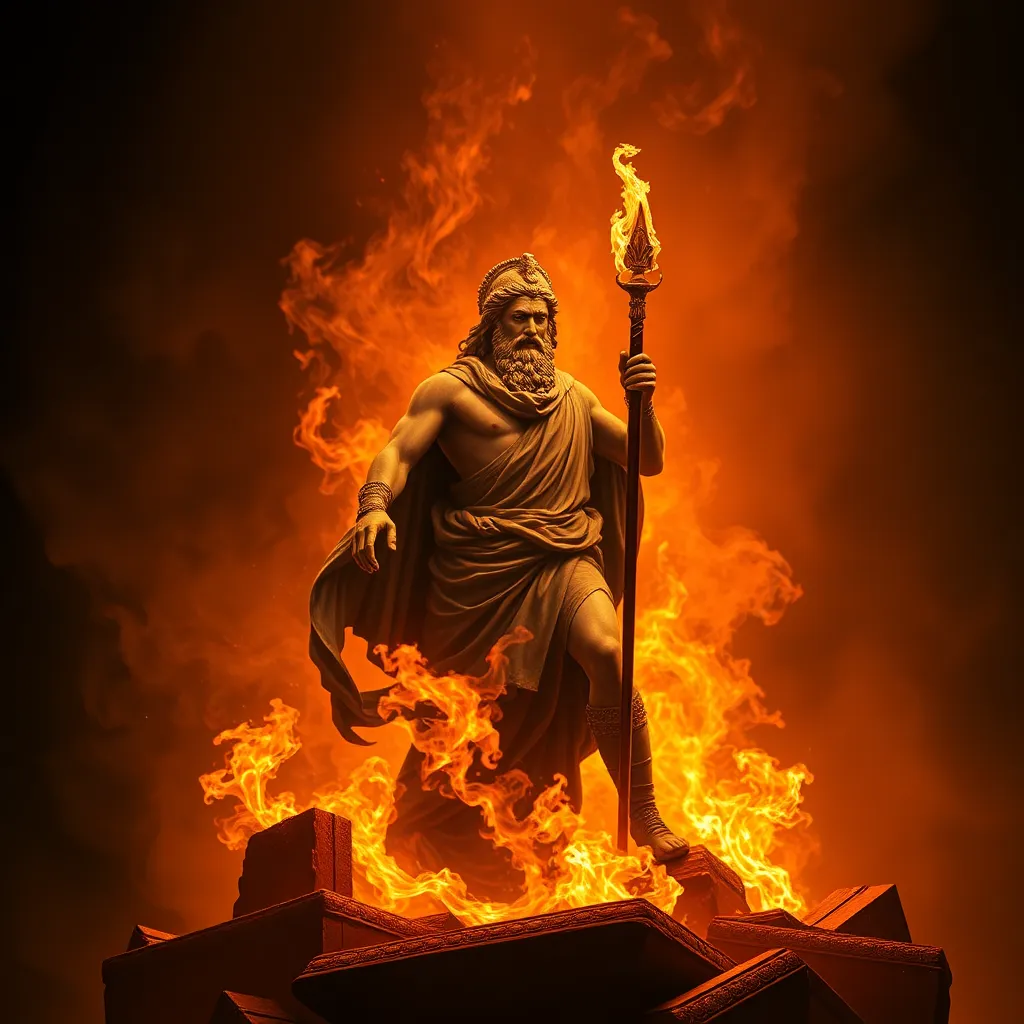The Myths of Hephaestus and the Symbolism of Fire
I. Introduction
Hephaestus is one of the most intriguing figures in Greek mythology, known primarily as the god of fire, metalworking, and craftsmanship. Unlike many of his divine counterparts, Hephaestus represents the value of labor and creation, embodying the transformative power of fire. In ancient cultures, fire was revered not only as a source of warmth and light but also as a divine element that enabled progress and innovation. This article explores the myths surrounding Hephaestus and delves into the profound symbolism of fire within his narratives.
II. The Birth and Origins of Hephaestus
Hephaestus is traditionally regarded as the son of Zeus and Hera, though some myths suggest he may have been born solely from Hera. His birth was surrounded by controversy due to his physical deformities, which led to his rejection by both parents. According to myth, Hera, disappointed by his appearance, cast him from Olympus, resulting in a catastrophic fall that left him crippled.
This rejection and subsequent exile serve as pivotal moments in Hephaestus’s story, emphasizing themes of resilience and the struggle for acceptance. His deformity symbolizes the idea that true strength lies not in outward appearances but in inner capabilities and skills.
III. Hephaestus as the God of Fire and Craftsmanship
Hephaestus holds several important roles in mythology: he is the blacksmith of the gods, a master craftsman, and an artisan. His association with fire is multifaceted; it represents both the literal element used in his forging processes and a metaphorical essence symbolizing creativity and transformation.
- Blacksmith: Hephaestus is often depicted working in his forge, crafting beautiful and powerful weapons for the gods, such as Zeus’s thunderbolts and Achilles’s armor.
- Craftsman: His skills extend beyond weapons to the creation of intricate jewelry and automata, showcasing the beauty of craftsmanship.
- Artisan: Hephaestus embodies the spirit of innovation, pushing the boundaries of what can be created with fire and metal.
The act of creation through craftsmanship symbolizes not just the physical act of building but also the transformative power of fire, which can both forge and destroy.
IV. Major Myths Involving Hephaestus
Several key myths highlight Hephaestus’s significance in Greek mythology:
- The Creation of Pandora: Hephaestus was tasked with creating Pandora, the first woman, as a punishment to humanity. Her creation is emblematic of the dual nature of gifts—while she brought curiosity and beauty, her curiosity led to the release of evils into the world.
- The Marriage to Aphrodite: Hephaestus’s marriage to the goddess of love, Aphrodite, is laden with themes of desire and betrayal, as she often strayed from him, notably with Ares, the god of war. This relationship highlights the contrast between love and craftsmanship.
- The Golden Automata: Hephaestus crafted living golden automata to assist him in his forge. These creations symbolize the pinnacle of craftsmanship and the blending of art with life, showcasing his innovative spirit.
V. The Symbolism of Fire in Hephaestus’s Myths
Fire plays a crucial symbolic role in the myths of Hephaestus, representing both creation and destruction. This duality reflects the complexity of Hephaestus’s character:
- Creativity: Fire is a source of inspiration and innovation, allowing Hephaestus to create magnificent works of art and powerful weapons.
- Destruction: Fire can also signify chaos and destruction, as seen in the potential for weapons to bring ruin. Hephaestus’s creations could be used for both protection and devastation.
- Transformation: Fire is a transformative force, capable of changing raw materials into something new and beautiful, mirroring Hephaestus’s personal journey from rejection to mastery.
VI. Hephaestus’s Influence on Art and Culture
The legacy of Hephaestus extends beyond mythology; he has influenced art and culture throughout history:
- Depictions in Art: Ancient art often portrays Hephaestus in his forge, surrounded by tools and creations, emphasizing his role as a master craftsman.
- Literary Legacy: In literature, Hephaestus serves as a symbol of the value of hard work and the beauty of creation, inspiring poets and writers for centuries.
- Modern Interpretations: Today, Hephaestus’s myths continue to inspire contemporary artists and technologists, reflecting the ongoing relevance of craftsmanship and innovation in society.
VII. The Philosophical Interpretations of Fire and Hephaestus
The myths of Hephaestus invite philosophical reflections on the nature of fire and its implications for humanity:
- Metaphor for Passion: Fire represents human passion and creativity, driving individuals to innovate and excel in their pursuits.
- Moral Lessons: Hephaestus’s trials teach valuable lessons about resilience, hard work, and the importance of embracing one’s unique qualities despite societal rejection.
- Understanding the Human Condition: The role of fire in Hephaestus’s story allows for a deeper understanding of the dual aspects of creation and destruction present in human life.
VIII. Conclusion
In summary, the myths of Hephaestus reveal the intricate relationship between the god of fire and the elemental power of creation. His journey from rejection to mastery serves as a powerful narrative about resilience and the transformative nature of craftsmanship. The symbolism of fire in his myths offers profound insights into creativity, destruction, and the human experience.
In today’s context, these themes remain relevant, as they speak to our ongoing relationship with innovation, technology, and the arts. Hephaestus’s enduring legacy reminds us that from the flames of adversity can arise the beauty of creation and the spirit of transformation.




